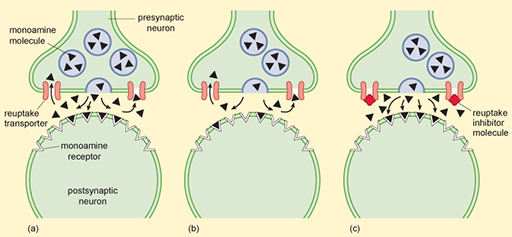
Figure 10 The monoamine hypothesis of mood disorders. (a) In normal brain, monoamine molecules are released and bind to receptors on the neighbouring neuron; (b) In depression, fewer monoamine molecules are available for binding to receptors, leading to a mood disorder; (c) Treatment with a reuptake inhibitor (the red shape blocking the reuptake transporter channel; here the SSRI Prozac®) increases the number of monoamine molecules in the synaptic gap, so more are available to bind to receptors on the neighbouring neuron. This corrects the mood disorder.
